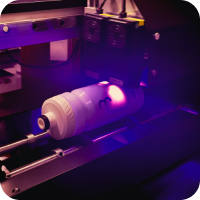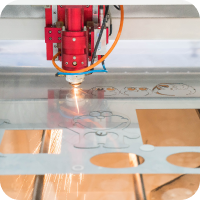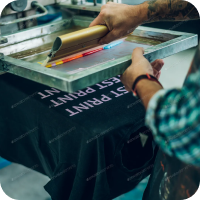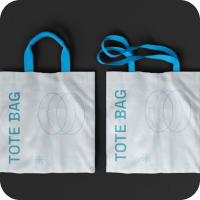Eco-Friendly Fashion: Sustainable Benefits of Digital Fabric Printing


Eco-Friendly Fashion: Sustainable Benefits of Digital Fabric Printing
As the fashion and textile industries move toward more responsible production, digital fabric printing has emerged as a powerful ally for sustainability. Compared to traditional methods like screen printing and rotary printing, digital technology significantly reduces waste, lowers water usage, and enables smarter, more conscious production. For brands, designers, and businesses, it offers a way to stay stylish and sustainable—without compromising on color, detail, or creativity.
🌍 Why Sustainability Matters in Fashion & Textiles
The fashion industry has long been associated with overproduction, high water consumption, and chemical-heavy processes.
As consumers become more eco-aware, brands are under pressure to:
– Reduce environmental impact
– Minimize waste and overstock
– Offer ethical, traceable production processes
Digital fabric printing directly addresses many of these concerns, making it a game changer for eco-friendly fashion and décor.
💧 Less Water, Less Waste
One of the biggest advantages of digital fabric printing is how water-efficient it is compared to traditional methods.
- Minimal Water Usage: Unlike conventional dyeing and screen printing, digital printing often requires far less water for washing, rinsing, and color changes.
- No Screens, No Excess Ink: Since artwork goes directly from file to fabric, there is no need to wash screens or tools—reducing chemical and water waste.
- Reduced Effluent: Lower water usage means less contaminated water entering treatment systems.
For brands looking to align with environmental goals, this reduction in water and chemical consumption is a significant step toward sustainable production.
🧵 Print Only What You Need: On-Demand Production
Overproduction is one of fashion’s biggest challenges. With traditional methods, brands often commit to large print runs just to make production cost-effective. Digital printing changes that.
- Low Minimum Quantities: Print small batches, capsule collections, or even single custom pieces without wasteful oversupply.
- On-Demand Manufacturing: Produce fabric only when there is real demand—ideal for pre-order models and limited drops.
- Less Unused Inventory: Reduced dead stock leads to lower landfill contribution and better resource management.
This shift from mass production to smart, demand-driven printing is key to making fashion more sustainable.
🎨 Eco-Smart Color: Precision Over Excess
Digital fabric printing uses computer-controlled ink application, which means:
- Exact Ink Usage: Only the required amount of ink is jetted onto the fabric—no large ink baths or spillover.
- Less Chemical Overload: Fewer pre-coats, fixers, and washes are needed compared to traditional setups.
- Repeatable Color Accuracy: Digital workflows allow consistent color reproduction without repeated test runs and wasted fabric.
Precision printing reduces not only physical waste, but also the energy and resources needed for reprints and corrections.
♻️ Compatible with Sustainable Fabrics
Digital printing works beautifully on a variety of eco-friendly substrates, including:
- Organic Cotton: GOTS-certified options for ethically sourced apparel and home textiles.
- Recycled Polyester (rPET): Perfect for sportswear, banners, and soft signage with a smaller carbon footprint.
- Linen & Bamboo: Natural materials that pair well with low-impact inks and printing processes.
By combining digital technology with responsible fabric choices, brands can build collections that are sustainable from fiber to finish.
⚙️ Energy Efficiency & Cleaner Processes
Digital systems are designed for streamlined workflows:
- Fewer Production Steps: No screen making, emulsion coating, or long drying stages.
- Shorter Setup Times: Faster transitions between designs reduce idle machine time.
- Smaller Footprint: Compact machines and simplified processes can lower energy use per meter of fabric printed.
This makes digital fabric printing a strong fit for brands seeking both efficiency and environmental responsibility.
👗 Creative Freedom Without Overconsumption
Sustainability doesn’t mean compromising on aesthetics. In fact, digital printing offers:
- High-Resolution Detail: Fine lines, gradients, and complex artwork print with clarity and vibrancy.
- Endless Design Variation: Run multiple colorways or patterns in a single batch without extra setup.
- Personalization at Scale: Names, numbers, and unique elements can be added without additional screens or plates.
Designers can experiment more, waste less, and bring collections to life with precision and personality.
📈 Better Alignment with Conscious Consumers
Today’s shoppers increasingly ask:
- How was this product made?
- What impact did it have on the environment?
- Does this brand care about sustainability?
By adopting digital fabric printing, brands can:
- Showcase more transparent, eco-conscious production practices.
- Highlight reduced water use and waste in marketing and labeling.
- Appeal to a growing segment of environmentally aware customers.
🏁 Final Thread: Style with a Smaller Footprint
Eco-friendly fashion isn’t a passing trend—it’s the future of the industry. Digital fabric printing plays a crucial role in this shift by offering:
- Lower water and chemical usage
- Reduced waste and overproduction
- Compatibility with sustainable fabrics
- Efficient, flexible, and creative workflows
For brands, designers, and print providers, it’s an opportunity to deliver beauty responsibly—proving that you can care for the planet and still create bold, vibrant designs.
If you’re exploring ways to make your fashion or textile line more sustainable, digital fabric printing is one of the smartest steps you can take toward a greener future.
#DigitalFabricPrinting #EcoFriendlyFashion #SustainableTextiles #OnDemandPrinting #SoftSignage #GreenPrinting #TextileInnovation
 Vehicle Graphics
Vehicle Graphics Branding
Branding Stickers
Stickers Hoarding
Hoarding Exhibition Stands
Exhibition Stands UV Flatbed Printing
UV Flatbed Printing Signage
Signage Laser Cutting
Laser Cutting Screen Printing
Screen Printing Digital Fabric Printing
Digital Fabric Printing Thermal Transfer
Thermal Transfer Personalized Gifts
Personalized Gifts Promotional Products
Promotional Products Flag Printing
Flag Printing Website & Digital Marketing
Website & Digital Marketing